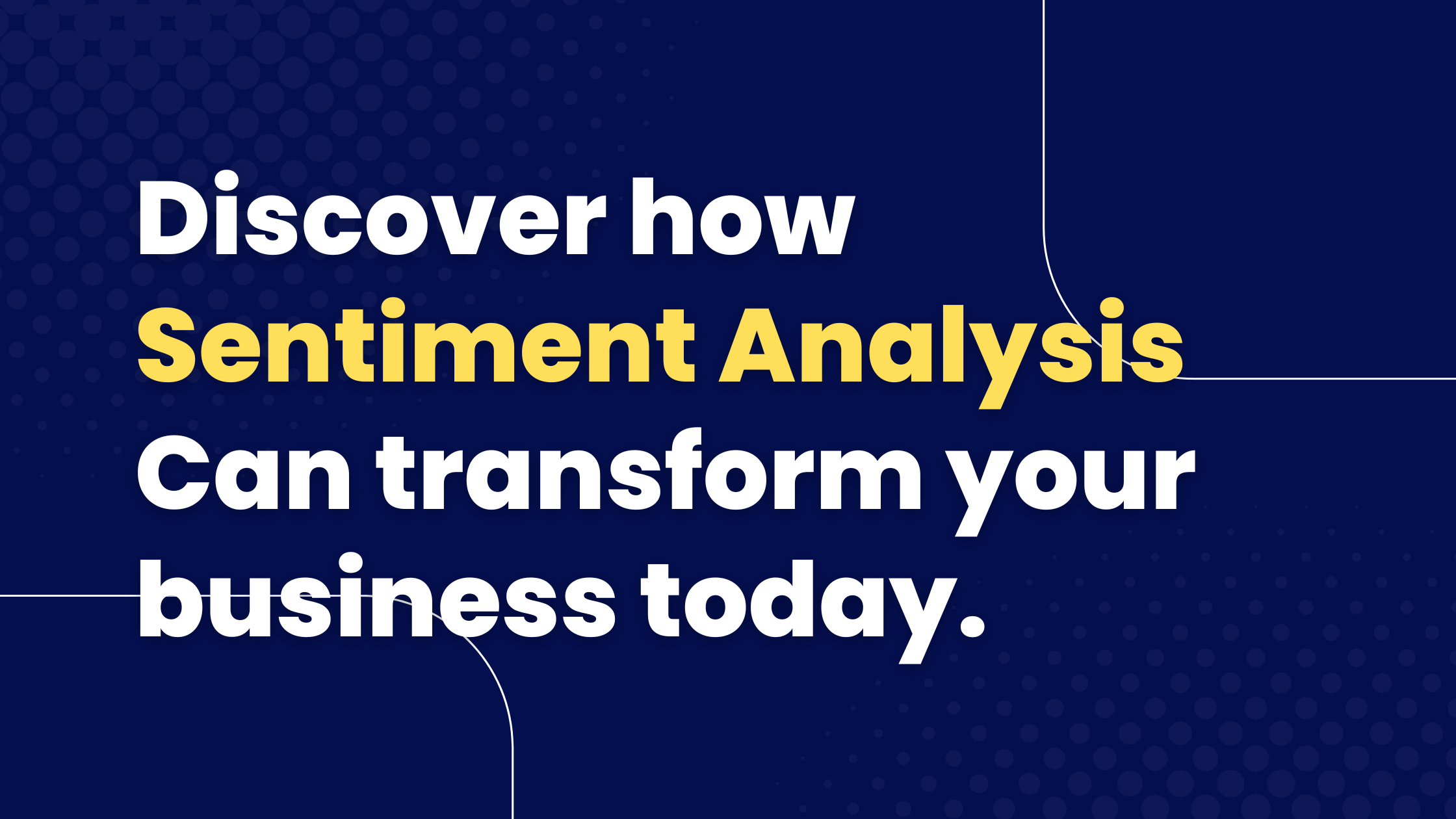Sentiment analysis shows what your customers think about your business, your products or services, even when they don’t say it out loud.
Running a local business is hard, but what makes it harder is guessing what your customers want. Sentiment analysis takes away the guesswork. It reads between the lines of your feedback and tells you exactly how your customers feel, so you can address small problems before they escalate into bigger issues. If you want to grow faster, this is where to start.
In this guide, I’ll show you how sentiment analysis can become your weapon for understanding what your customers really want, and how one simple tool can transform those insights into immediate business improvements.
We will cover:
- What Is Sentiment Analysis?
- How Sentiment Analysis Works
- The Different Types Of Sentiment Analysis
- Why Sentiment Analysis Is Important for Local SEO
- How Local Businesses Benefit From Sentiment Analysis
- How To Setup Sentiment Analysis Step-by-Step
- Challenges In Sentiment Analysis & How to Overcome Them
- Real Life Local Business Case Studies
- Conclusion & Next Steps
- FAQs
What Is Sentiment Analysis?
Sentiment analysis is a way to find out how people feel about your business. It looks at things like reviews, social media posts, and customer messages to figure out if the tone is positive, negative, or neutral. This is called understanding customer sentiment.
For local businesses, this is important. People in your area are talking, online and offline, and their opinions can shape your reputation. With local sentiment analysis, you can track how your community feels about your service, fix issues fast, and build healthy relationships with your customers.
How Sentiment Analysis Works
Sentiment analysis starts by collecting what your customers are already saying, like reviews on Insight IQ Hub, comments on Instagram or Facebook, and even WhatsApp or website chat messages. These are the data sources.
Once all that text is gathered, the system studies the words to figure out the feelings behind them. Did the person sound happy? Angry? Disappointed? That’s the main goal, understanding the mood.
There are different ways this is done. Some tools use a word list, or lexicon, to spot emotional words. Others use machine learning (ML) to learn patterns in customer feedback. The most powerful tools use a hybrid of both for better accuracy.
To go deeper, there’s aspect-based analysis. This breaks down feedback into parts, like how customers feel about your service, prices, or staff. That way, you know exactly what your customers are talking about.
Let’s explain each of these methods.
1. Lexicon
Lexicon-based analysis is one of the oldest ways to track customer sentiment. It uses a list of words, some marked as “positive” (like “great”) and others as “negative” (like “bad”). The tool scans customer reviews and counts how many of each kind show up.
This simple method is great for quick local sentiment analysis, especially if your business gets lots of reviews. It helps you spot mood trends without needing advanced tech.
According to Mo, tracking the tone of your feedback can boost your visibility, since reviews are important for local SEO.
2. machine learning (ML)
Machine learning (ML) helps sentiment tools get smarter over time. Instead of just counting words, ML looks at patterns in how people talk. It learns from thousands of reviews, making it better at spotting sarcasm, mixed feelings, and deeper meaning.
It’s great for real-time analysis and gives better objectivity by removing personal bias from the process. Plus, ML supports aspect-based analysis, showing what parts of your business, like price or service, people feel strongly about.
3. Hybrid
Hybrid sentiment analysis combines both lexicon and machine learning methods. It gives you both speed and depth; you get quick results from a word list and smarter insights from ML. This mix is perfect for fine-grained, aspect-based analysis, helping your team see exactly what customers say about your service, price, or staff.
Research shows hybrid models boost accuracy by about 7% compared to using only ML (Daniel Kumala et al., 2023). researchgate.net
This method is great for sentiment analysis in your community. When tied into reviews, it feeds into local SEO, helping nearby customers find you. And since it uses local sentiment analysis, you see real-time updates on how people feel about your business.
The Different Types Of Sentiment Analysis
1. Standard (Polarity) Sentiment Analysis
This is the most basic type of sentiment analysis. It analyzes what people say and categorizes the message into three groups: positive, negative, or neutral.
Let’s say someone writes, “The food was great!” That’s marked as positive. If they say, “Service was slow,” that’s negative. Something like “The place was okay” might be neutral.
It’s a quick way to get a general sense of what your customers think.
2. Fine-Grained Sentiment Analysis
Fine-grained sentiment analysis takes things a step further than basic positive or negative. Instead, it uses a scale like very positive, positive, neutral, negative, or very negative.
This helps you track small changes in how people feel. For example, a review that says, “I’m kind of happy with the service” would be seen as mildly positive, not just “positive.”
It gives you a clearer picture of customer sentiment, especially when people aren’t being super direct.
3. Aspect-Based Sentiment Analysis
Aspect-based sentiment analysis helps you dig deeper into customer feedback. Instead of looking at the whole message, it breaks it down into parts, like price, service, food, or location, and checks how people feel about each one.
So if a customer says, “The food was great but the service was slow,” the tool will mark “food” as positive and “service” as negative.
This type of sentiment analysis gives you a clearer picture of what customers like or dislike.
4. Emotion Detection Analysis
Emotion detection is a type of sentiment analysis that goes beyond positive or negative. It looks for specific feelings in a message, like joy, anger, sadness, fear, or surprise.
For example, if a customer writes, “I’m so frustrated with your late delivery,” the tool picks up anger. If they say, “Thank you for the fast service, I’m thrilled!” it detects joy.
This is helpful in customer care.
5. Intent-Based Sentiment Analysis
Intent-based sentiment analysis focuses on what the customer is trying to do with their message. Are they complaining? Asking for help? Giving a compliment?
This type of analysis reads between the lines to figure out the purpose behind the words. For example, “I can’t log into my account” is likely a request for help, while “Your service is the worst” is a complaint.
6. Multilingual Sentiment Analysis
Multilingual sentiment analysis helps businesses understand how customers feel no matter what language they speak. It can read reviews, messages, or social media posts written in different languages or local dialects.
This is really helpful if your business serves people from many backgrounds or locations. For example, if some customers write in English and others in Yoruba or French, the tool can still tell if their message is positive, negative, or neutral.
It makes sure no feedback is missed, and everyone’s voice is heard.
Why Sentiment Analysis Is Important for Local SEO
Reviews and feedback affect your local SEO a lot. According to socialpilot, review signals account for nearly 16% of how Google ranks local businesses.
Also, good reviews help you show up in “near me” searches and the Google Local Pack, which drives more traffic and customer actions.
Building trust and visibility is just as important. One study found 83% of consumers won’t consider a business with low ratings (searchengineland).
Sentiment analysis tools use aspect-based and real-time analysis to spot if customers praise your service or complain about price. This gives objectivity so you can fix issues fast, and boost your search rankings.
How Local Businesses Benefit From Sentiment Analysis
Sentiment analysis helps local businesses understand how people truly feel about products or services. Instead of guessing, you get clear feedback, what customers like, what they don’t like, and what makes them come back.
With fine-grained tools, you can break reviews into parts. Maybe people love your food but think your wait time is too long. That kind of detailed feedback helps you make quick changes.
It also helps fix problems early. If someone leaves a bad review, you can spot it quickly and respond politely. This is what builds trust and protects the reputation of your business.
Listening to how your customers feel helps you keep them happy, attract new ones, and grow stronger than your competition.
How To Setup Sentiment Analysis Step-by-Step
1. Collect & Aggregate Data
The first step in sentiment analysis is gathering all the places your customers share their thoughts. This includes Google reviews, Facebook comments, WhatsApp messages, and even feedback from your website.
To save time, Insight IQ Hub helps you consolidate all this data into a single, intuitive dashboard. Instead of checking ten apps, everything is in one place.
This video shows you how Insight IQ works.
This makes it easier to run real-time analysis and gives you better objectivity.
If you plan to do aspect-based analysis later, which is recommended, starting with clean, complete data is important. You’ll want to know not just how customers feel, but what exactly they’re talking about, like your food, staff, or pricing.
2. Categorize Sentiment
Once your feedback is collected, the next step is sorting it out. This means checking if each message is positive, negative, or neutral. Insight IQ Hub can do this for you automatically.
This helps you understand customer sentiment clearly, what people like, what they don’t, and what they feel unsure about. For local businesses, this is called local sentiment analysis, and it’s powerful. It shows how people in your area feel about your service, so you can respond the right way.
3. Act on Feedback
Now that you know how people feel, it’s time to do something about it. If customers complain about long waits, fix it. If they commend your clean space, highlight that. Acting on feedback shows customers you care.
This also helps your local SEO, happy customers leave better reviews, and that boosts your ranking in local searches.
Instead of guessing what to change, you follow real data. That means smarter decisions, faster fixes, and a better reputation for your business.
4. Monitor Trends
Don’t just check feedback once and forget it. Keep an eye on how your customer sentiment changes over time. Are more people happy after you made a change? Are new complaints showing up?
Watching these trends helps you stay ahead. You can fix problems early and repeat what’s working. It’s about keeping your customers happy long term.
Challenges Of Sentimental Analysis
1. Local Language
Many sentiment analysis tools are built for global use, so they may struggle with local languages. If your customers write in a mix of English and local dialects, the system might miss the meaning.
To fix this, Insight IQ Hub supports custom word lists and learns local speech over time. This boosts objectivity and helps you understand what your customers are saying.
2. Mixed Sentiments
Some reviews include both good and bad comments, like “Great food, but the wait was too long.” A basic tool might label this as neutral, which isn’t helpful. Aspect-based analysis can help here. It separates each part of the feedback, so you know what’s working and what needs fixing.
3. Local Slang
Words like “mad” can mean angry or amazing, depending on where you are. Slang makes sentiment analysis tricky. To handle this, choose tools that offer real-time analysis and can learn slang over time. You can also help by tagging common local phrases. This improves accuracy and makes sure your feedback reports reflect how people really feel.
4. Sarcasm
Sarcasm is hard for machines to understand. A customer might say, “Oh great, another 40-minute wait,” but they’re not happy. Without context, a tool might see “great” and mark it as positive. The fix? Use smarter tools that improve with data and offer objectivity over time. The more real reviews the system sees, the better it gets at spotting sarcasm and giving you honest results.
Sentiment Analysis Case Study
Delta Air Lines
Delta uses aspect-based sentiment analysis to track how travelers feel throughout their journey. They collect data from reviews, surveys, social media, and chat feedback.
Here’s how it works:
- Flight delays flagged: When travelers reported frustration with flight delays, Delta’s data showed a clear drop in customer sentiment specifically about delays, not their app or staff. This kind of insight is thanks to real-time analysis tools. (widewail.com)
- Fast updates: Delta added live flight updates through its Fly Delta app, sending delay alerts via notifications. This step, powered by real-time analysis, improved passenger trust. (inc.comrenascence.io.)
- Objective decisions: With data in hand, Delta made changes based on what travelers care about most. This objectivity means decisions aren’t guesses; they’re driven by real feedback.
- Better reputation: After adding app alerts and better updates, travelers praised Delta’s communication, boosting trust and maintaining their public image.
Delta’s use of meaningful, specific feedback shows how sentiment analysis helps fix real problems and keep customers happy.
Conclusion & Next Steps
If you run a local business, listening to your customers is no longer optional, it’s the smart way to grow. Sentiment analysis helps you understand what people think and feel, not just what they say.
By tracking customer sentiment, you can fix problems fast, improve service, and build trust that lasts. Tools like Insight IQ Hub make it easy to get started—even if you’re not tech-savvy.
So here’s your next step: start paying attention to how your customers feel. The sooner you do, the sooner your business gets better, stronger, and more trusted.
Go on and share your opinion on this in the comment box below.
FAQs
1. How does sentiment analysis help with customer service?
It shows you how your customers feel in real-time, so you can respond quickly and in the right way.
2. Can sentiment analysis spot fake reviews?
Some advanced tools can catch patterns that look fake or overly repeated.
3. Is customer sentiment the same as a star rating?
No. Customer sentiment tells you how customers feel in their own words. A star rating is just a number.
4. Can sentiment analysis understand slang or local language?
Yes, but only if the tool is built to handle it. Some tools cannot.
5. Do I need tech skills to use sentiment analysis?
No. Tools like Insight IQ Hub are made simple for small business owners.
6. What’s one way sentiment analysis can help my business today?
You can quickly spot if customers are comfortable with your prices or service, and fix it before it hurts your sales.





